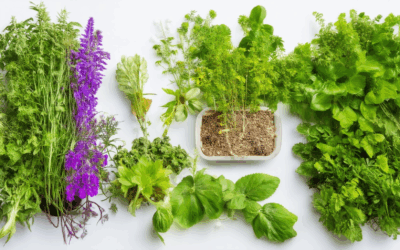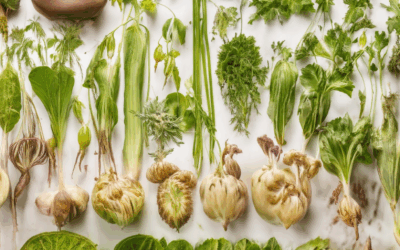Seed preservation is a cornerstone of sustainable gardening and food security, offering a vital link between generations and ensuring the continuity of plant diversity. For those eager to safeguard their garden’s heritage or achieve self-sufficiency, mastering effective seed preservation techniques is essential. Whether you’re preserving heirloom seeds for future planting or learning how to store seeds for long-term storage, this guide provides actionable strategies and insights. From understanding the best practices for seed collection to exploring innovative methods for storing seeds, this article delves into the intricacies of seed preservation, helping you maintain biodiversity and ensure a stable food supply for years to come. Discover how simple yet profound seed-saving techniques can transform your approach to gardening and contribute to a healthier planet.
Key Takeaways
– Proper Drying: Ensure seeds are thoroughly dried to prevent moisture buildup, placing them in a cool, well-ventilated area.
– Desiccants: Use silica gel or alternatives like rice to absorb moisture, enhancing seed longevity.
– Airtight Containers: Store seeds in glass jars or plastic containers with Mylar bags for added protection against humidity.
– Cool Storage: Maintain seeds in a cool, dark place, ideally between 35-40°F, to slow metabolism and extend viability.
– Labeling: Clearly label containers with seed type, date, and batch number for easy tracking.
– Monitoring Viability: Regularly check seeds for signs of spoilage and test germination to ensure viability.
– Vacuum Sealing: Consider vacuum sealing for an extra protective layer, though airtight containers with oxygen absorbers are a practical alternative.
– Supplies: Source high-quality storage solutions from trusted providers like Old Seed for effective seed preservation.
Best Seed Preservation Techniques
Preserving seeds is a vital step in ensuring the continuity of your garden or farm. Here are some expert-recommended techniques to keep your seeds alive longer:
- 1. Proper Drying
- Dry seeds using silica gel or rice.
- Store in a cool, dry place away from sunlight and humidity.
- Seeds should be completely dry before storing to prevent mold growth.
- 2. Airtight Containers
- Use clean, food-grade containers like glass jars or plastic bags.
- Make sure containers are free from moisture and pests.
- Label the container with the seed type and date stored.
- 3. Low Moisture Levels
- Moisture content should be between 3% to 7% for most seeds.
- Use desiccant packets or silica gel for better drying efficiency.
- Test moisture levels periodically using a hygrometer.
- 4. Cool Storage
- Store seeds in a refrigerator or cooler at around 35°F to 41°F (2°C to 5°C).
- This slows down metabolism and extends seed viability.
- Check seeds every few months to ensure they remain viable.
- 5. Avoid Pest Infestation
- Inspect seeds regularly for signs of pests like beetles or mites.
- Use pest-proof containers or store in locations with limited access.
- Treatment options may be necessary if pests are detected early.
- 6. Regular Testing
- Test seed viability by sprouting a small portion every year.
- Plant seeds indoors or in a greenhouse to monitor germination rates.
- Replace seeds that fail to germinate after several years.
By following these techniques, you can significantly extend the lifespan of your seeds and ensure successful growth in the future planting season. Remember to store seeds in a climate-controlled environment and conduct regular checks for optimal preservation outcomes.
For more resources and tools to enhance your seed preservation process, visit our trusted partners:
- Seed Savers Exchange – Experts in heirloom seed preservation and community sharing.
- Heirloom Organics – Premium seed storage solutions and education.
How to Store Seeds for Long-Term Preservation
Storing seeds for long-term preservation requires careful preparation and attention to detail to ensure their viability and longevity. Here’s a comprehensive guide to effectively preserving your seeds:
Step 1: Dry the Seeds Thoroughly
Moisture is the enemy of seed preservation. Ensure your seeds are completely dry before storage. Spread them out in a cool, well-ventilated area, ideally between 50-70°F (10-21°C). Using a fan can accelerate the drying process.
Step 2: Use a Desiccant
To further reduce moisture, incorporate a desiccant. Silica gel is highly effective and commonly used. Place a silica gel packet in the container with the seeds. Alternatives like rice or salt can also absorb moisture, though silica gel is generally more reliable.
Step 3: Choose the Right Container
Store seeds in an airtight container, such as a glass jar or plastic container with a lid. For added protection against humidity, line the container with Mylar bags, which reflect light and help maintain a stable temperature.
Step 4: Label the Containers
Label the container with the seed type, date of preservation, and batch number. This ensures you know when the seeds were stored and allows for easy tracking of their age and condition.
Step 5: Optimize Storage Conditions
Keep the containers in a cool, dark place, preferably between 35-40°F (2-5°C), to slow down seed metabolism. Avoid exposure to sunlight, as it can heat up the environment prematurely.
Step 6: Monitor and Test Viability
Periodically check the seeds for signs of moisture, mold, or pests. Test a small sample for germination to ensure viability. If the seeds feel stale or develop an off odor, discard them immediately.
Step 7: Consider Vacuum Sealing
For an extra layer of protection, use a vacuum sealer. While not essential for home use, it significantly reduces oxygen levels, slowing oxidation and extending seed life.
Where to Find Supplies
For high-quality storage solutions, visit Old Seed. They offer a variety of desiccants, containers, and Mylar bags tailored for seed preservation. Their guides and resources provide valuable insights for novice preservers.
By following these steps, you can successfully preserve your seeds for years to come, ensuring they remain viable and ready for planting whenever needed.
How to Store Seeds for Long-Term Preservation
Storing seeds properly is essential for maintaining their viability and ensuring they can be planted successfully in future growing seasons. Here’s a step-by-step guide to preserving seeds effectively:
- Choose the Right Container: Use clean, dry, and airtight containers such as glass jars, plastic containers with lids, or seed envelopes. These options help protect the seeds from moisture, pests, and temperature fluctuations.
- Dry the Seeds Thoroughly: Before storing, ensure seeds are completely dry. Wet seeds can mold or rot, which reduces their viability. Spread them out in a well-ventilated area or use silica gel packets to absorb moisture.
- Store in a Cool, Dark Place: Keep seeds in a location with consistent temperatures between 32°F to 41°F (0°C to 5°C). Avoid direct sunlight, as it can heat up the container and harm the seeds.
- Label the Containers: Clearly mark the seed type, date of storage, and any important details about the variety. This helps in tracking and ensures proper management of the seed stock.
- Regular Monitoring: Check the containers periodically to ensure there’s no sign of mold, pests, or moisture buildup. Replace old containers or bags as needed to maintain freshness.
For added protection, consider using Old Seed’s premium seed storage solutions . Our specially designed containers and packaging systems are optimized for long-term seed preservation, ensuring your garden continues to thrive for years to come.
Learn more about advanced seed preservation techniques and discover how to extend the lifespan of your seed collection with expert recommendations from Old Seed.
Don’t forget to explore our growing community for additional tips and insights from experienced gardeners and farmers who have mastered the art of seed preservation.
How to Store Seeds for Long-Term Preservation
Storing seeds for long-term preservation requires careful preparation and attention to detail to ensure their viability and longevity. Here’s a comprehensive guide to effectively preserving your seeds:
Step 1: Dry the Seeds Thoroughly
Moisture is the enemy of seed preservation. Ensure your seeds are completely dry before storage. Spread them out in a cool, well-ventilated area, ideally between 50-70°F (10-21°C). Using a fan can accelerate the drying process.
Step 2: Use a Desiccant
To further reduce moisture, incorporate a desiccant. Silica gel is highly effective and commonly used. Place a silica gel packet in the container with the seeds. Alternatives like rice or salt can also absorb moisture, though silica gel is generally more reliable.
Step 3: Choose the Right Container
Store seeds in an airtight container, such as a glass jar or plastic container with a lid. For added protection against humidity, line the container with Mylar bags, which reflect light and help maintain a stable temperature.
Step 4: Label the Containers
Label the container with the seed type, date of preservation, and batch number. This ensures you know when the seeds were stored and allows for easy tracking of their age and condition.
Step 5: Optimize Storage Conditions
Keep the containers in a cool, dark place, preferably between 35-40°F (2-5°C), to slow down seed metabolism. Avoid exposure to sunlight, as it can heat up the environment prematurely.
Step 6: Monitor and Test Viability
Periodically check the seeds for signs of moisture, mold, or pests. Test a small sample for germination to ensure viability. If the seeds feel stale or develop an off odor, discard them immediately.
Step 7: Consider Vacuum Sealing
For an extra layer of protection, use a vacuum sealer. While not essential for home use, it significantly reduces oxygen levels, slowing oxidation and extending seed life.
Where to Find Supplies
For high-quality storage solutions, visit Old Seed. They offer a variety of desiccants, containers, and Mylar bags tailored for seed preservation. Their guides and resources provide valuable insights for novice preservers.
By following these steps, you can successfully preserve your seeds for years to come, ensuring they remain viable and ready for planting whenever needed.
Best Seed Preservation Techniques
Preserving seeds is a vital step in ensuring the continuity of your garden or farm. Here are some expert-recommended techniques to keep your seeds alive longer:
- 1. Proper Drying
- Dry seeds using silica gel or rice.
- Store in a cool, dry place away from sunlight and humidity.
- Seeds should be completely dry before storing to prevent mold growth.
- 2. Airtight Containers
- Use clean, food-grade containers like glass jars or plastic bags.
- Make sure containers are free from moisture and pests.
- Label the container with the seed type and date stored.
- 3. Low Moisture Levels
- Moisture content should be between 3% to 7% for most seeds.
- Use desiccant packets or silica gel for better drying efficiency.
- Test moisture levels periodically using a hygrometer.
- 4. Cool Storage
- Store seeds in a refrigerator or cooler at around 35°F to 41°F (2°C to 5°C).
- This slows down metabolism and extends seed viability.
- Check seeds every few months to ensure they remain viable.
- 5. Avoid Pest Infestation
- Inspect seeds regularly for signs of pests like beetles or mites.
- Use pest-proof containers or store in locations with limited access.
- Treatment options may be necessary if pests are detected early.
- 6. Regular Testing
- Test seed viability by sprouting a small portion every year.
- Plant seeds indoors or in a greenhouse to monitor germination rates.
- Replace seeds that fail to germinate after several years.
By following these techniques, you can significantly extend the lifespan of your seeds and ensure successful growth in the future planting season. Remember to store seeds in a climate-controlled environment and conduct regular checks for optimal preservation outcomes.
For more resources and tools to enhance your seed preservation process, visit our trusted partners:
- Seed Savers Exchange – Experts in heirloom seed preservation and community sharing.
- Heirloom Organics – Premium seed storage solutions and education.
Seed Preservation Techniques: A Comprehensive Guide
Preserving seeds is essential for maintaining biodiversity and ensuring future gardening success. Here are the top techniques to keep your seeds viable and ready for planting:
- Dry Storage: Store seeds in a dry environment to prevent moisture buildup. Use desiccant packets or silica gel to absorb excess humidity. Ensure containers are airtight and made of food-grade materials.
- Temperature Control: Keep seeds in a cool, dark place with stable temperatures between 32-41°F (0-5°C). Consider using Mylar bags or food-grade diatomaceous earth to maintain dryness and protect against pests.
- Airtight Containers: Use glass jars or plastic containers with lids. Label each container with the seed type and storage date for easy tracking.
- Vacuum Sealing: While effective, vacuum sealing may affect germination rates. Opt for airtight containers with oxygen absorbers as a practical alternative.
- Refrigeration: Store seeds in the refrigerator for extended viability. Avoid freezing temperatures to prevent damage.
- Seed Vaults: For long-term storage, consider using a seed vault that offers controlled environments and includes desiccants. Research options like Seed Vault for secure storage solutions.
- Rotation and Monitoring: Rotate seeds annually to maintain freshness. Periodically test seed viability by attempting germination to ensure they remain potent.
- High-Quality Seeds: Source seeds from reputable sellers offering certifications to guarantee viability. This ensures your efforts are supported by reliable genetics.
By implementing these techniques, you can extend the lifespan of your seeds and ensure successful growth in the future. Remember to store seeds in a cool, dark place and regularly monitor their condition for optimal results.








0 Comments